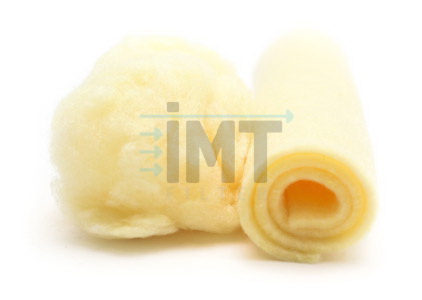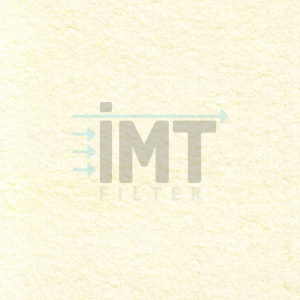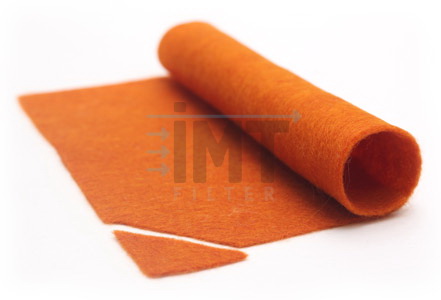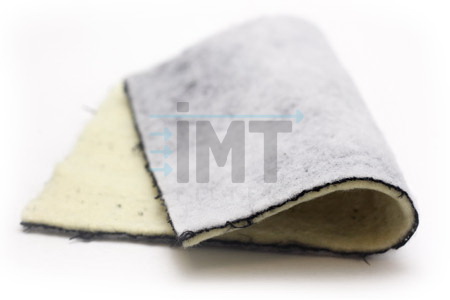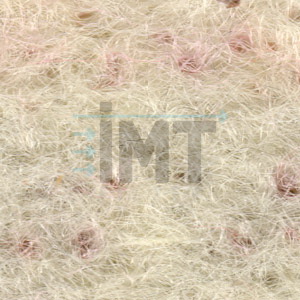Air purification by materials PANION®
Why PANION®?
Many dangerous air pollutants – volatile acids and alkalis – are absorbed with traditional adsorbing materials such as activated carbon and silica gel badly. Among these are:
Substances of acid nature:
- inorganic acids: HCl (hydrochloric), HF (hydrofluoric), H2SO4 (sulfuric), HNO3 (nitric), H3PO4 (phosphoric) and others;
- oxides of acid nature: SO2 (sulfur dioxide), NO2 (nitrogen dioxide), SO3, CrO3 and others;
- organic acids: HCOOH (formic), CH3COOH (acetic) and others;
- hydrogen cyanide HCN;
- Cl2 (chlorine), Br2 (bromine);
Substances of basic nature
- alkalis: NaOH (sodium hydroxide), KOH (potassium hydroxide) etc.;
- NH3 (ammonia);
- amines: (tri-) (di-) (mono-) methylamines, (tri-) (di-) (mono-) ethyla-mines etc.;
Other substances
- H2S (hydrogen sulfide), CH2O (formaldehyde);
and many other substances.
Materials PANION® are intended for air purification from such pollutants by its concentrations until 500 mg/m3.They are also very effectively used in air cleaning systems from different smells, bad-smelling substances, tobacco smoke.
Chemical nature
The materials PANION® have the same chemical nature as granular ion exchangers. They are acids and alkalis and are produced in different textile forms: staple, fabrics and non-woven fibers, which are ideally suited for air filtration combined with chemical purification.
How does air purification occur?
Air purification process occurs due to neutralization reaction of acid and basic groups in material with toxic components of air or due to its catalytical destruction.
Using ion exchange materials
The materials PANION® are the basis for industrial filters for air purification working in automatic regeneration mode – ion exchange filters FIF, CF, FIF-CF (at high air pollutants concentration).
In addition at lower concentration of pollutants ion-exchangers fibrous are widely used in disposal filters of different construction – pocket, panel, compact filters etc.
Thanks to its textile form ion exchangers fibrous can be used by producers of dust filters in their standard items without changing manufacturing process, that extends the range and application fields of their products by far.
The filters on base of materials Panion are used in industry, agriculture, as well as for deep air purification in «clean rooms» of microelectronic, optical, instrumentation manufacturing industries and also analytical laboratories.
Selective air purification
«IMT-Filter» company has developed a range of materials for selective air purification of difficult-to-detect substances:
Panion 110 — Substances of basic nature: ammonia, amines, alkalis
Fibrous ion exchanger PANION 110
PANION 110 — weak-acid fibrous cation exchanger, an analogue of well-known trademarks VION, FIBAN, MION.
Applications:
- Air purification from volatile substances of base nature: ammonia, amines, alkalis etc. Panion 110 can be applied in industrial and domestic air cleaning systems;
- Water purification from the ions of heavy metals, water softening;
- Human protective means (respirators, gas-masks, protective costumes etc): removal of vapors of ammonia and amines.
Technical specification*:
| Functional groups: | -COOH |
| The base polymer | polyacrylonitrile (PAN) fiber |
| Ion exchange capacity, meq/g | 4 – 7 |
| Temperature working range | 0 – 80°C |
| pH working range | 1 – 12 |
| Textile forms |
|
| Stability against aggressive media | Stable against concentrated HCl, H2SO4, Na2CO3 and all organic solvents. In concentrated NaOH accumulates carboxyl acid groups |
| Regeneration | With a weak solution of acid or salt |
| Stable in multiple cycles of «sorption-regeneration», «wetting-drying» | |
* - on a customer request fibrous ion exchange material with other physical and chemical properties can be produced.
Panion 220 и Panion 310 — Substances of acid nature: SO2, SO3, HF, HCl, H2SO4, NxOy, CrO3 and other
Fibrous ion exchanger PANION 220
PANION 220 — fibrous polyampholyte containing primary and secondary amino groups, analogue of well-known trademarks FIBAN, MION.
Applications
- Air purification from volatile substances of acid nature (SO2, SO3, HF, HCl, H2SO4, NxOy, CrO3) in industrial and domestic air cleaning systems;
- Human protective means (respirators, gas-masks, protective costumes etc): removal of gases and vapors of acid nature;
- Wiping materials (napkins, towels etc) to remove drops of acids from human skin and surfaces of objects.
Technical specification*
| Functional groups | ≡N, =NH, -NH2, -COOH |
| The base polymer | polyacrylonitrile (PAN) fiber |
| Ion exchange capacity, meq/g | 3 – 5 (on amino groups) 1 – 1,5 (on carboxylic groups) |
| Temperature working range | 0 – 80°C |
| pH working range | 1 – 12 |
| Textile forms |
|
| Stability against aggressive media | Stable against concentrated solutions of acids, soda and all organic solvents. |
| Regeneration | With a weak solution of soda Na2CO3 |
| Stable in multiple cycles of «sorption-regeneration», «wetting-drying» | |
* - on a customer request fibrous ion exchange material with other physical and chemical properties can be produced.
Fibrous ion exchanger PANION 310
PANION 310 – fibrous anion exchanger
Applications
- Air purification from volatile substances of acid nature (SO2, SO3, HF, HCl, HCOOH, CrO3 и etc) in industrial and domestic air cleaning systems;
- Human protective means (respirators, gas-masks, protective costumes etc): removal of gases and vapors of acid nature (SO2, SO3, HF, HCl, HCOOH, CrO3);
Technical specification*
| Functional groups | -N(CH3)2, =NH |
| The base polymer | polyacrylonitrile (PAN) fiber |
| Ion exchange capacity, meq/g | 4 - 5 |
| Temperature working range | 0 – 50°C |
| pH working range | 1 – 12 |
| Textile forms |
|
| Stability against aggressive media | Stable against diluted solutions of acids and alkalis |
| Regeneration | With a weak solution of soda Na2CO3 |
| Stable in multiple cycles of «sorption-regeneration», «wetting-drying» | |
* - on a customer request fibrous ion exchange material with other physical and chemical properties can be produced.
Panion 410 — Substances of basic nature: ammonia, amines, alkalis
Fibrous ion exchanger PANION 410
PANION 410 – fibrous chemically active filtering material for air purification from toxic substances of base nature
Applications
Air purification from volatile substances of base nature: ammonia, amines, aerosols of alkalis at low concentrations (10-500 microgram/m3), and in wide range of air humidity (30-100%);
Panion 410 is intent for application in filtering elements in forced and recycling air cleaning systems.
Panion 410 is especially effective for air purification in “clean room” of microelectronic, pharmaceutical industry, medicine etc.
Panion 410 has antimicrobial and antibacterial effect.
Technical specification*
| The base polymer | Anion exchanger with tertiary amino groups on base of polyacrylonitrile (PAN) fiber |
| Ion exchange capacity on NH3, meq/g | 2,5 – 4 |
| Air humidity working range, % | 15 – 100 |
| Temperature working range | 0 – 60°C |
| Textile forms |
|
| Regeneration | With a solution of mineral acid |
* - on a customer request fibrous ion exchange material with other physical and chemical properties can be produced.
Panion 420 — Hydrogen sulfide
Fibrous ion exchanger PANION 420
PANION 420 – fibrous ion exchanger intended for selective sorption of hydrogen sulphide (H2S)
Applications
- Air purification from H2S inside of industrial and office buildings, in “clean rooms” of microelectronic, pharmaceutical industry, medicine etc
- Human protective means (respirators, gas-masks etc): removal of H2S (5 – 10 mg/m3);
- Protection of sensors and other control devices from side contamination by H2S.
Technical specification*
| Functional groups | -(CH2COO)2(FeOH)2 |
| The base polymer | Anion exchanger with tertiary amino groups on base of polyacrylonitrile (PAN) fiber |
| Ion exchange capacity on H2S, gH2S/g of the material | 0,1 - 0,2 |
| Temperature working range | 1 – 50°C |
| Air humidity working range, % | 30 – 100 |
| Textile forms |
|
| Regeneration | Not regenerating |
* - on a customer request fibrous ion exchange material with other physical and chemical properties can be produced.
Panion 430 — Formaldehyde
Fibrous ion exchanger PANION 430
PANION 430 — fibrous ion exchanger intended for air purification from formaldehyde
Applications
- Air purification from formaldehyde inside of industrial and office buildings including recirculating regime;
- Human protective means (respirators, gas-masks for removal of formaldehyde)
Technical specification*
| Functional groups | amino groups |
| The base polymer | Anion exchanger with tertiary amino groups on base of polyacrylonitrile (PAN) fiber |
| Ion exchange capacity on formaldehyde, g formaldehyde /g of the material | until 50 |
| Temperature working range | 1 – 50°C |
| Air humidity working range, % | 45 – 95 |
| Textile forms |
|
| Regeneration | Not regenerating |
* - on a customer request fibrous ion exchange material with other physical and chemical properties can be produced.
Panion 440 — Carbon monoxide CO
Fibrous ion exchanger PANION 440
PANION 440 — fibrous ion exchanger intended for low-temperature air purification from carbon monoxide.
PANION 440 is metal-containing carbon-fibrous catalyst.
Applications
- Air purification from impurities of CO in filtering units while the content of CO is until 0,03 vol.% (20 MAC) and humidity of the cleaning air from 20 to 95%;
- Human protective means (respirators, gas-masks for removal of CO while its content in air is until 20 MAC (maximum allowable concentration) and humidity 20-85%; Self-rescuers for removal of high concentrations of CO (0,25-0,5 vol. %) in the cleaning air and humidity 30-95%.
Technical specification*
| The base polymer | carbon fibrous catalytically-activated fiber |
| Catalytic activity: residual concentration of CO in the cleaning air |
|
| Temperature working range | 0 – 500°C |
| Textile forms |
|
* - on a customer request fibrous ion exchange material with other physical and chemical properties can be produced.
Panion 510 — Simultaneous content of substances of acid, basic and organic nature: SO2, SO3, HF, HCl, HCOOH, CrO3, organic acids, NH3, amines, mercaptans, benzene, acetone, formaldehyde, bad-smelling substances, odors, tobacco smoke, smog, high-toxic substances, chemical agents etc.
Fibrous ion exchanger PANION 510
PANION 510 — filtering material for air and water purification from composition of toxic substances of acid, base and organic nature.
PANION 510 – is combination of several layers of fibrous ion exchange and fibrous activated carbon textile materials. Any combination of ion exchange and active carbon materials can be produced in dependence on composition of contaminants on the customer request.
Applications
- Air purification from mixture of toxic contaminants of acid, base and organic nature: SO2, SO3, HF, HCl, HCOOH, CrO3, organic acids, NH3, amines, benzene, acetone, formaldehyde, bad-smelling substances, poisonous substances, warfare agents etc. PANION 510 is effective in wide range of air humidity (30-100%) in industrial and domestic air cleaning systems;
- Water purification from toxic organic contaminants, ions of heavy metals, nitrates, anions of metals (chrome, molybdenum, tungsten, vanadium), water softening;
- Human protective means (respirators, gas-masks, protective costumes etc etc): removal toxic substances of acid (SO2, SO3, HF, HCl etc.), base (NH3, amines), and organic (benzene, acetone, toluene, warfare agents, poisonous substances) nature.
Technical specification*
| Functional groups | Amino- and carboxylic groups |
| Adsorption activity on methylene blue, mg/g | min 26 |
| Ion exchange capacity, meq/g | min 0,6 (on amino groups) min 0,8 (on carboxylic groups) |
| Textile forms | Non-woven needle-punched fabric |
| Surface density | 400 – 1000 g/m2 |
| Width | max 1600 mm |
| Thickness | 3 – 10 mm |
| Textile form ion exchange layers | Non-woven needle-punched fabric |
| Textile form of fibrous active carbon material | Non-woven material, activated carbon gauze fabric, fabric |
| Temperature working range | 0 – 50°С |
| pH working range | 1 – 12 |
| Regeneration | Type 1, 2 – are not regenerating type 3 – with water vapor |
* - on a customer request fibrous ion exchange material with other physical and chemical properties can be produced.
Panion 530 — Bacteria, viruses, pathogens
Fibrous ion exchanger PANION 530
PANION 530 — filtering material for air purification from viruses, bacteria, pathogens, microorganisms.
PANION 530 not only bonds viruses and bacteria but also kills them and prevents their reproduction inside of the filtering element and therefore a secondary pollution.
Applications
- Air purification from viruses, bacteria in inlet and recycling ventilating systems, “clean rooms”, automobile filters etc.
- Human protective means (respirators, gas-masks, protective napkins etc)
Technical specification*
| The base polymer | Anion exchanger with tertiary amino groups on base of polyacrylonitrile (PAN) fiber |
| Textile forms |
|
| Surface density | 200 – 1000 g/m2 |
| Width | max 1600 mm |
| Thickness | 2 – 10 mm |
| Temperature working range | 0 – 60°С |
| Regeneration | Not regenerating |
* - on a customer request fibrous ion exchange material with other physical and chemical properties can be produced.

Fibrous ion exchangers are unique high-tech product developed on base of funfdamental researches of National Academy of Sciences of Belarus


